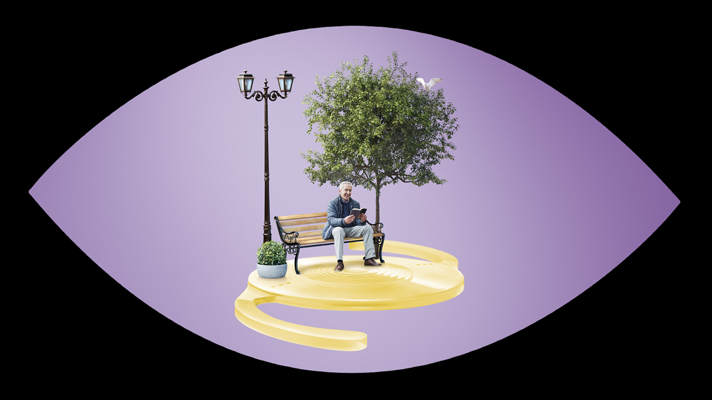Vivinex™ Gemetric™ User Meeting - Clinical Evidence For 'Pairing' Complementary Trifocal Technologies
Clinical Evidence For 'Pairing' Complementary Trifocal Technologies
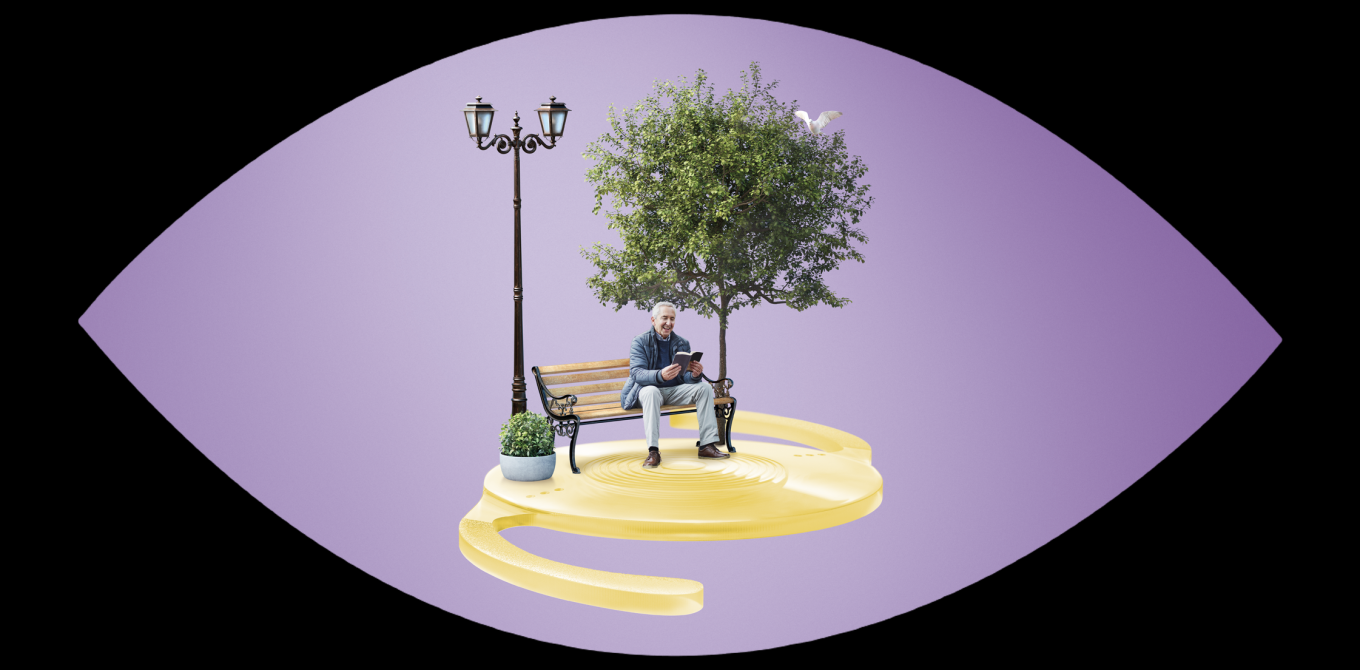
Digital Supplement | Sponsored by HOYA Surgical Optics
Vivinex™ Gemetric™ User Meeting - Clinical Evidence For 'Pairing' Complementary Trifocal Technologies
Review the clinical data and real-world experiences presented at the 41st Congress of the ESCRS (2023) on Vivinex™ Gemetric™ and Vivinex™ Gemetric™ Plus IOLs. Erik Mertens, MD, FEBO, PCEO, FWCRS moderated a panel of experts. Read their thoughts on the impressive results in both clinical trials and the real world.
By Erik L. Mertens, MD, FEBO, PCEO, FWCRS, Bob Anello, Hakan Kaymak, MD, Ramón Ruiz Mesa, MD, FWCRS, and Dylan A. Joseph, MBChB, Dip(Ophth), FC Ophth, MMed, FWCRS
Clinical Data and Real-World Experience With Vivinex Gemetric Trifocal IOLs
Erik L. Mertens, MD, FEBO, PCEO, FWCRS
In September 2023, I moderated a User Meeting at the 41st Congress of the ESCRS exploring clinical data and real-world experiences with the Vivinex Gemetric and Vivinex Gemetric Plus IOLs (HOYA Surgical Optics).
At the time of the symposium, the company had analyzed data from approximately 900 cases with the Vivinex Gemetric and Vivinex Gemetric Plus IOLs—568 of these are enrolled in clinical trials, and approximately 350 eyes from real-world cases were collected in a registry using the CLEARlog surgical logbook system (Digital Surgical Solutions Ltd. UK - https://clearlogportal.com).
The following articles review the material presented at the User Meeting and re-enforce my own personal clinical experience, which is that the impressive clinical trial results are replicated in the real-world clinical outcomes experienced in daily practice.
The Design and Clinical Evidence Behind Vivinex Gemetric Trifocal IOLs
Bob Anello
As part of the development process, we analyzed the performance of the leading full range of focus technologies available on the market. We found that no single lens solution was optimized for all possible patients and patient experiences. So, to improve that, and with the input and recommendations of an esteemed panel of global surgeon advisers, we proceeded to develop a two-lens solution that may provide the full range of high-quality vision from far to near distances that today’s patients seek. These are the Vivinex Gemetric (G) and Vivinex Gemetric Plus (GP) trifocal IOLs.
Both the G and GP have the same add powers but differ only in their light energy distribution, the idea being to create complementary visual performance profiles that may provide patients with a range of high-quality vision across far, intermediate, and near distances. The benefit of this approach is to avoid some of the complexities associated with mixing lens types contralaterally, such as eye dominance considerations and neuroadaptation to two different technologies or add powers.
The diffractive element of both models has a step height of about 1 µm. A sub-ring of about 0.5 µm is located on the 1-µm step, providing a near add power of 3.5 D and an intermediate addition of 1.75 D. We decided to truncate the diffractive zone to a diameter of 3.2 mm in the center of the lens, but we specifically avoided apodization. The intention was that this balance of optical elements would help us to provide uncompromised distance vision in all light conditions and maintain functional near vision in low light, while minimizing dysphotopsias. Both G and GP lenses are built on the hydrophobic Vivinex platform, which means they are designed to partially correct -0.16 µm of corneal spherical aberrations and have HOYA’s proprietary aspheric technology to maintain image quality in the presence of potential misalignment from the visual axis. The lenses are preloaded in the multiSert injector system, which allows smooth and consistent IOL delivery in push and screw modes, as well as the ability to control insertion depth.
On the optical bench, we can see that the G and GP trifocal IOLs do indeed differ in their distributions of light energy (Figure 1). Relative to the G lens, the GP is designed to provide higher quality near vision by distributing roughly equal amounts of light energy to distance and near foci, while the G lens maintains the greater amount of light for distance. The diffractive efficiency of these designs at the 3-mm zone is 90% and increases at larger apertures.
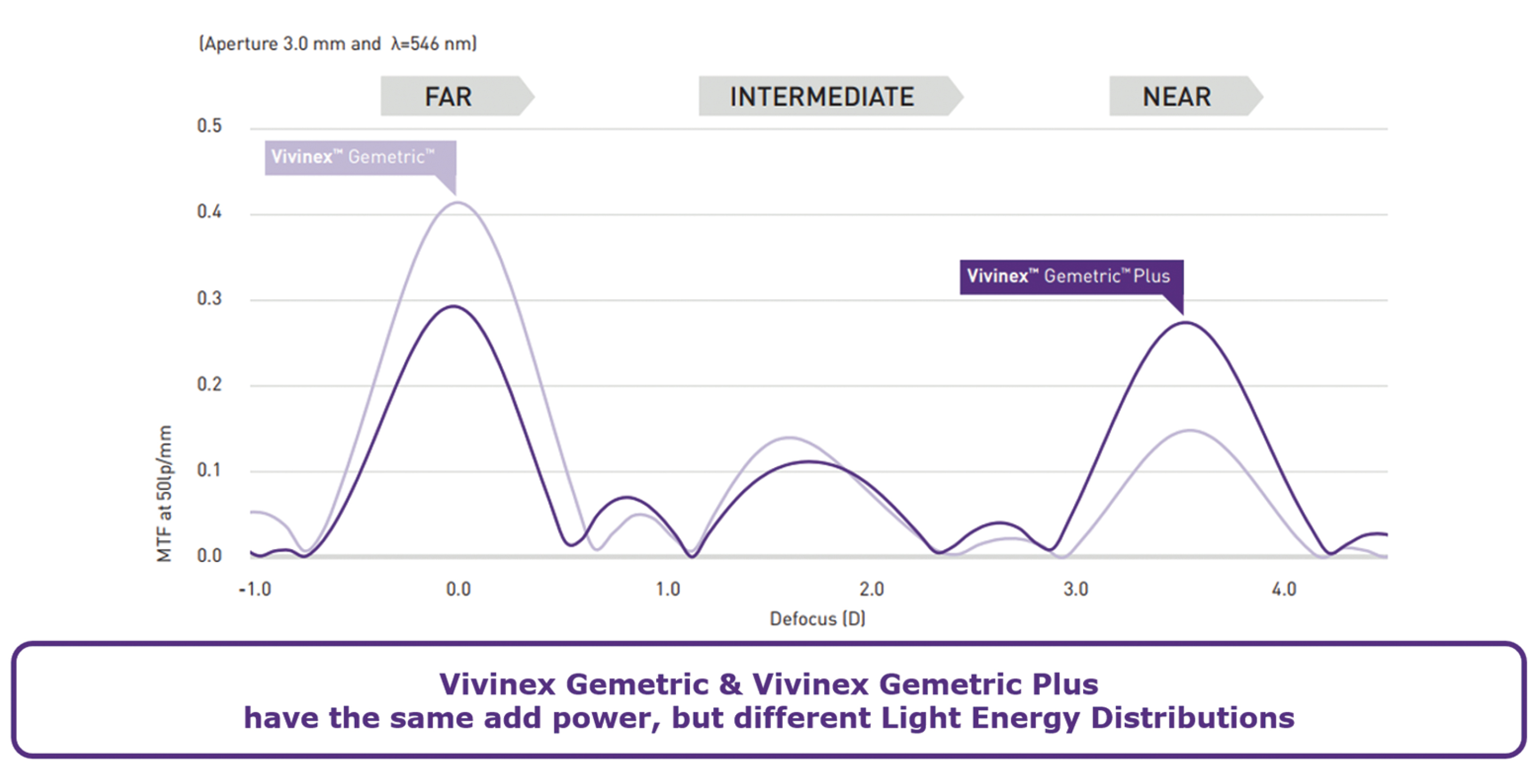
Figure 1. Simulated MTF through focus response of the two complementary profiles of Vivinex Gemetric (G) and Vivinex Gemetric Plus (GP) IOLs, which have the same add power, but different light energy distributions.
Across all of our available clinical data from multiple studies and 568 subjects,1 the Vivinex Gemetric lenses consistently achieved distance vision above 20/20. The data also showed a very low rate of glare, halos, and starbursts for both designs, as well as a very high level of spectacle independence for both the G and GP IOLs and very high overall patient satisfaction.
Real-world experience of approximately 350 eyes collected across more than 70 sites using CLEARlog shows a similar rate of glare but fewer halos and starbursts compared to patients enrolled in our clinical trials. Spectacle independence rates are also similar between the clinical trial and real-world experience.
- HOYA Data on File. HOYA Medical Singapore, Pte. Ltd, 2023.
Pairing Trifocal IOLs With Complementary Light Distributions: Visual Outcomes and Patient Satisfaction with Vivinex Gemetric IOLs
Hakan Kaymak, MD
Spectacle independence is the common goal for a growing number of patients presenting for cataract surgery, and today people spend more than 40% of their time on near tasks.1 Spectacle independence therefore requires high-quality vision from far to near distances, and trifocal IOLs remain the most consistent technology available for providing such spectacle independence.
This randomized multicenter clinical study2 investigated whether the contralateral pairing of two trifocal IOLs with the same add powers, but with complementary light distributions (the Vivinex Gemetric and Vivinex Gemetric Plus from HOYA Surgical Optics), enables patients to achieve the widest range of high-quality vision.
STUDY DESIGN
The study included 124 patients across 10 European centers (eight in Germany and two in Spain) with the aim of determining the rates of spectacle independence after cataract surgery following implantation of Vivinex Gemetric (G-G) bilaterally (n = 36), Vivinex Gemetric Plus (GP-GP) bilaterally (n = 52), and “paired” Vivinex Gemetric/ Vivinex Gemetric Plus (G-GP) contralaterally (n = 36). Eye dominance was not considered in the paired G-GP group given that the difference between the lenses is very nuanced.
Two-thirds of all eyes received a toric IOL (1.0 D to 3.0 D of cylinder at IOL plane) to achieve a predicted residual postoperative refractive cylinder of 0.50 D or less to minimize the need for spectacles after surgery.
RESULTS
At the 4-to-6-month follow-up, 124 patients were available, 69 of which had a toric IOL in both eyes and 28 of which had bilateral non-toric IOLs.
Monocular refraction and visual acuity
Both the toric and non-toric G and GP provided patients with excellent distance, intermediate, and near visual acuity, and 84% were within a spherical equivalent of ±0 50 D.
Distance-corrected visual acuity was excellent with both the G and GP IOLs. There was, however, variance in the intermediate and near distance-corrected monocular visual acuity achieved between eyes implanted with the G and GP lenses (Figure 1).
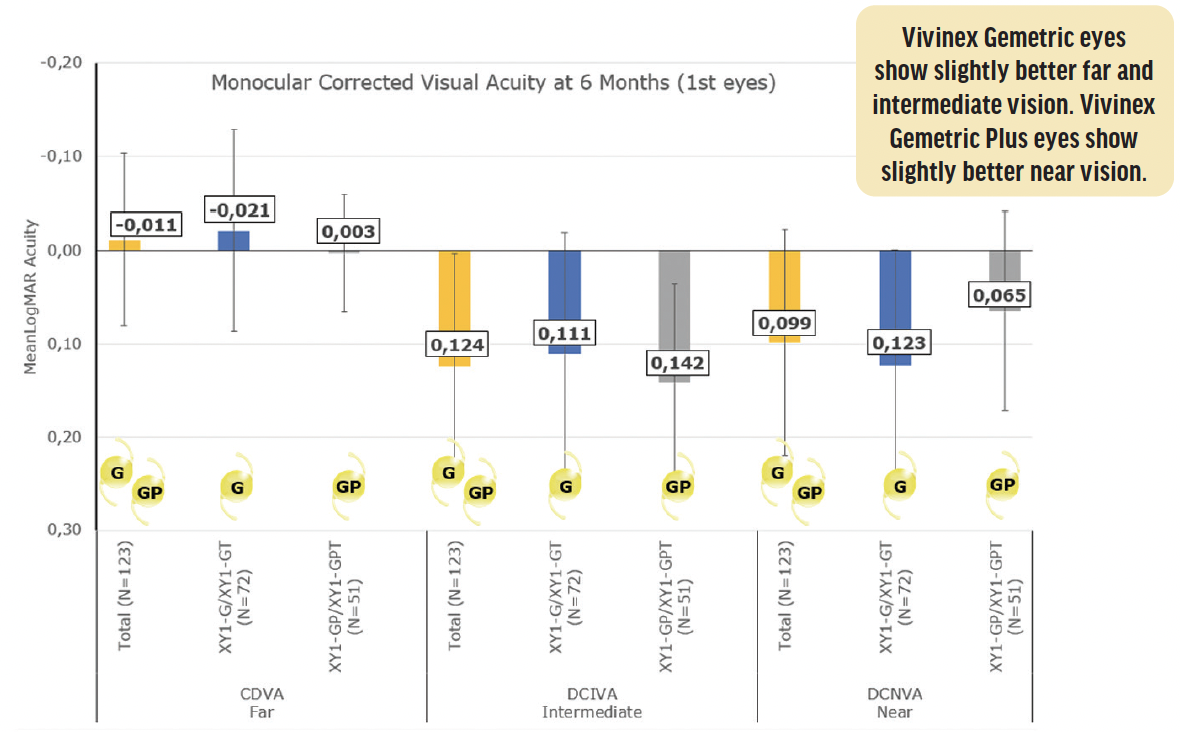
Figure 1. Monocular distance corrected visual acuity with the Vivinex Gemetric (G) and Vivinex Gemetric Plus (GP) IOLs 4 to 6 months postoperative.
Residual astigmatism
Postoperatively, 96% and 91% of non-toric and toric patients, respectively, had less than 0.50 D of residual astigmatism. All eyes were within 1.00 D of astigmatism.
Binocular Visual acuity under photopic and mesopic conditions
A difference in visual acuity following implantation of the bilateral G-G, bilateral GP-GP, and the paired G-GP groups was seen in the distance visual acuity outcomes. The bilateral G-G and the paired G-GP groups outperformed the bilateral GP-GP group in this regard.
In the intermediate vision range, bilateral G-G achieved the best results, with the paired G-GP group performing similarly well. In the near vision range, the paired G-GP and the bilateral GP-GP groups achieved better results than the bilateral G-G group (Figure 2).
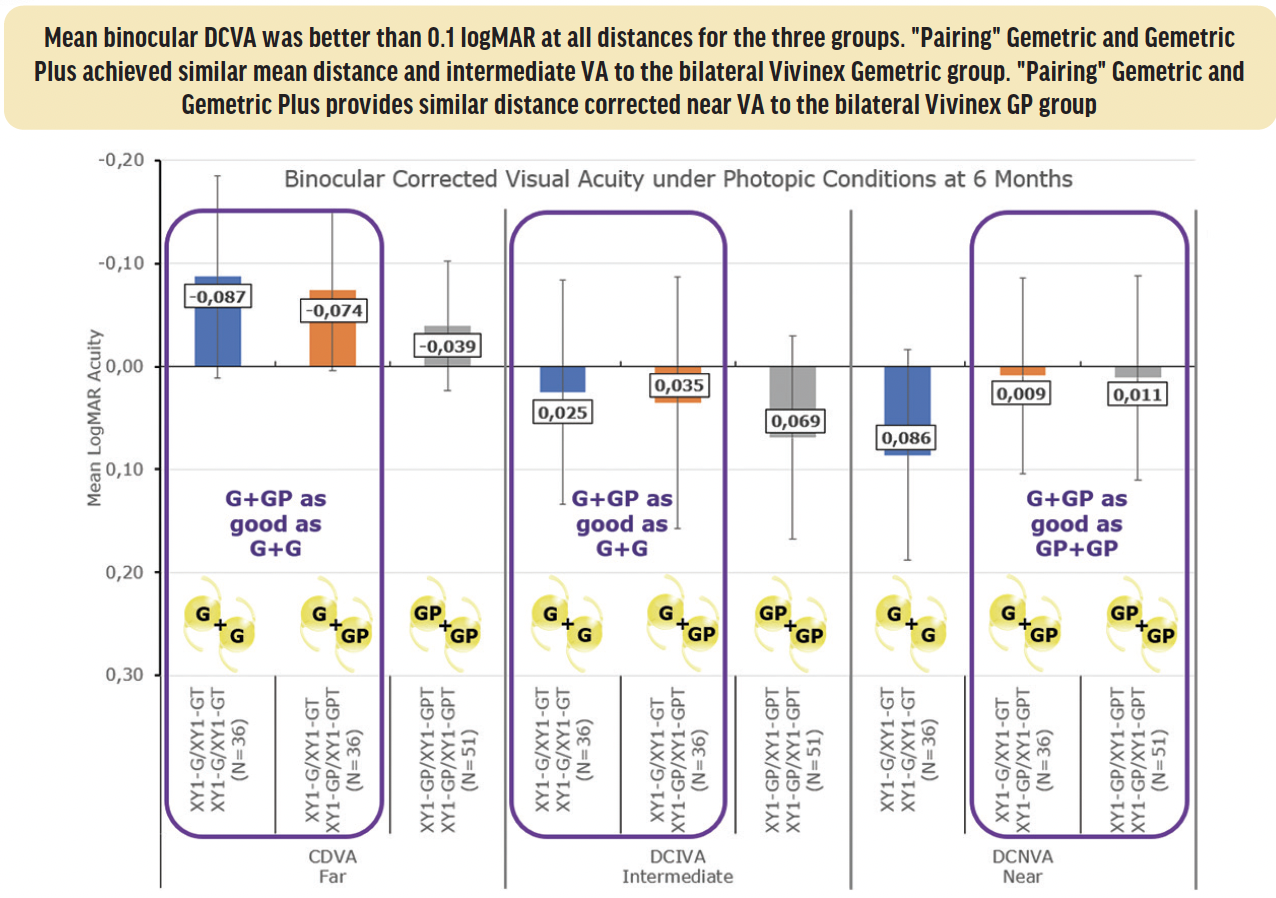
Figure 2. Binocular distance corrected visual acuity of 3 study arms of Vivinex Gemetric and Vivinex Gemetric Plus IOLs 4 to 6 months postoperative.
Binocular Defocus curve
Pairing Vivinex Gemetric and Vivinex Gemetric Plus achieves similar outcomes at far distance to the bilateral G-G group and similar outcomes at near distance to the bilateral GP-GP group. The bilateral G-G group appears to have an advantage in the intermediate range, with the paired G-GP group a close second (Figure 3).
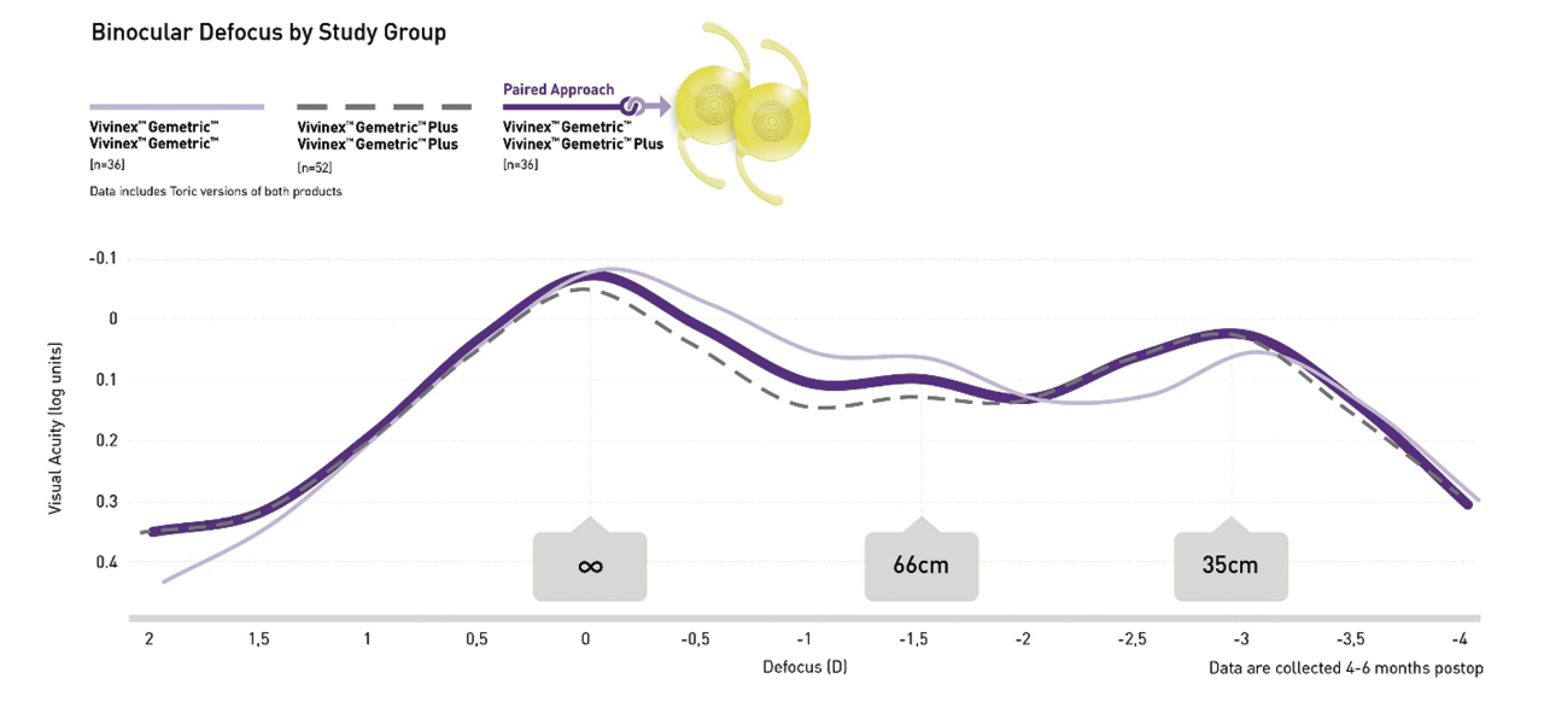
Figure 3. Binocular defocus curve comparison of 3 study arms of Vivinex Gemetric and Vivinex Gemetric Plus IOLs 4 to 6 months postoperative.
Patient satisfaction
Across all groups, more than 95% of patients were satisfied with the visual quality in both photopic and mesopic conditions, and 98% stated they would select the lens again. Patients rated visual disturbances as very low for both frequency and severity. The highest subjective score was achieved in the paired G-GP group, with over 90% of patients reporting being completely spectacle independent at far, intermediate, and near distances.
CONCLUSION
We can conclude from the binocular visual acuity data and the bilateral defocus curves that both bilateral Vivinex Gemetric IOL implantation and paired Vivinex Gemetric and Vivinex Gemetric Plus groups are solid choices regarding overall visual outcomes in terms of quality and range achieved, while the paired Vivinex Gemetric and Vivinex Gemetric Plus group achieved the broadest range of high-quality vision from far to very close near distances.
- Ribeiro et al. Analysis of daily visual habits in a presbyopic population. J Ophthalmol. 2023;6440954.
- Kaymak et al. NINO Study Group. Customizing Clinical Outcomes with Implantation of Two Diffractive Trifocal IOLs of Identical Design but Differing Light Distributions to the Far, Intermediate and Near Foci. Clin Ophthalmol. 2024 Apr 3;18:1009-1022.
From Clinical Investigator to Routine User: Pairing Vivinex Gemetric and Vivinex Gemetric Plus IOLs is my choice for providing a full range of high-quality vision
Ramón Ruiz Mesa, MD, FWCRS
I have been implanting the Vivinex Gemetric IOLs (HOYA Surgical Optics) since 2020 when I was involved in early clinical trials. At the trials’ conclusions, I was suitably impressed enough to keep using the Vivinex Gemetric (G) and Vivinex Gemetric Plus (GP) lenses when they became commercially available. I now routinely use both lenses in my clinical practice.
I implant the combination of Vivinex Gemetric and Vivinex Gemetric Plus (G-GP) IOLs in those patients with high motivation to achieve spectacle independence. Patients with retinal or corneal disease, severe dry eye disease, an endothelial cell count below 1,500 cells/mm2, irregular astigmatism, traumatic cataract, strabismus, amblyopia or single eye status, and pupil abnormalities are, of course, excluded.
In terms of how to use the lenses, I quickly noticed that the pairing of G-GP provides my patients with the best quality of vision, particularly at far distance when compared to the bilateral implantation of GP-GP. Pairing G-GP also provides a broader range of continuous high-quality vision than implanting bilateral G-G alone. As a result, I now perform contralateral paired implantation of Vivinex Gemetric and Vivinex Gemetric Plus lenses routinely.
All of my patients are very happy with this approach. Unlike those commonly practiced mix-and-match technologies that make use of different add powers, I do not believe that considering eye dominance has a material impact on outcomes or patient satisfaction. Patient complaints of dysphotopsias are less or similar to the many other trifocal platforms I have used.
I recently evaluated data from 30 of my paired G-GP patients (mean age: 66.26 ±11.33 years). The main evaluation endpoints were uncorrected and corrected binocular distance, intermediate, and near visual acuities; contrast sensitivity; and aberrations. The implanted IOL power range was between 18.00 and 26.00 D, and 20% of patients received a toric version.
The visual acuity outcomes when implanting G-GP contralaterally are seen in Figure 1. Vision was very good at all distances, especially for near and far distances. The defocus curve for visual acuity results from my patients was greater than 0.15 logMAR for 3.50 D (Figure 2), which was similar to that of the multicenter clinical study.
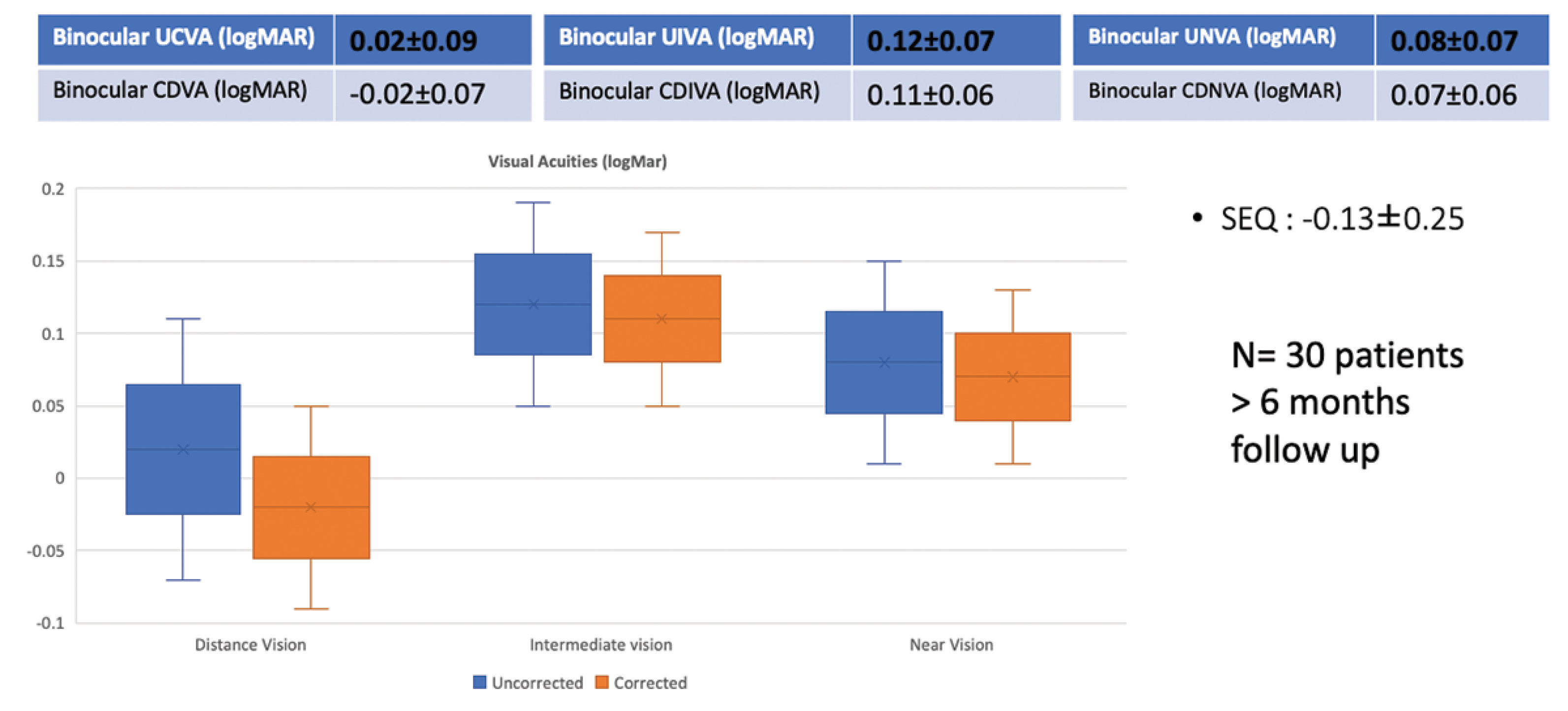
Figure 1. Binocular visual acuity outcomes with pairing Vivinex Gemetric (G) and Vivinex Gemetric Plus (GP) IOLs (30 Patients; more than 6 months postoperative).
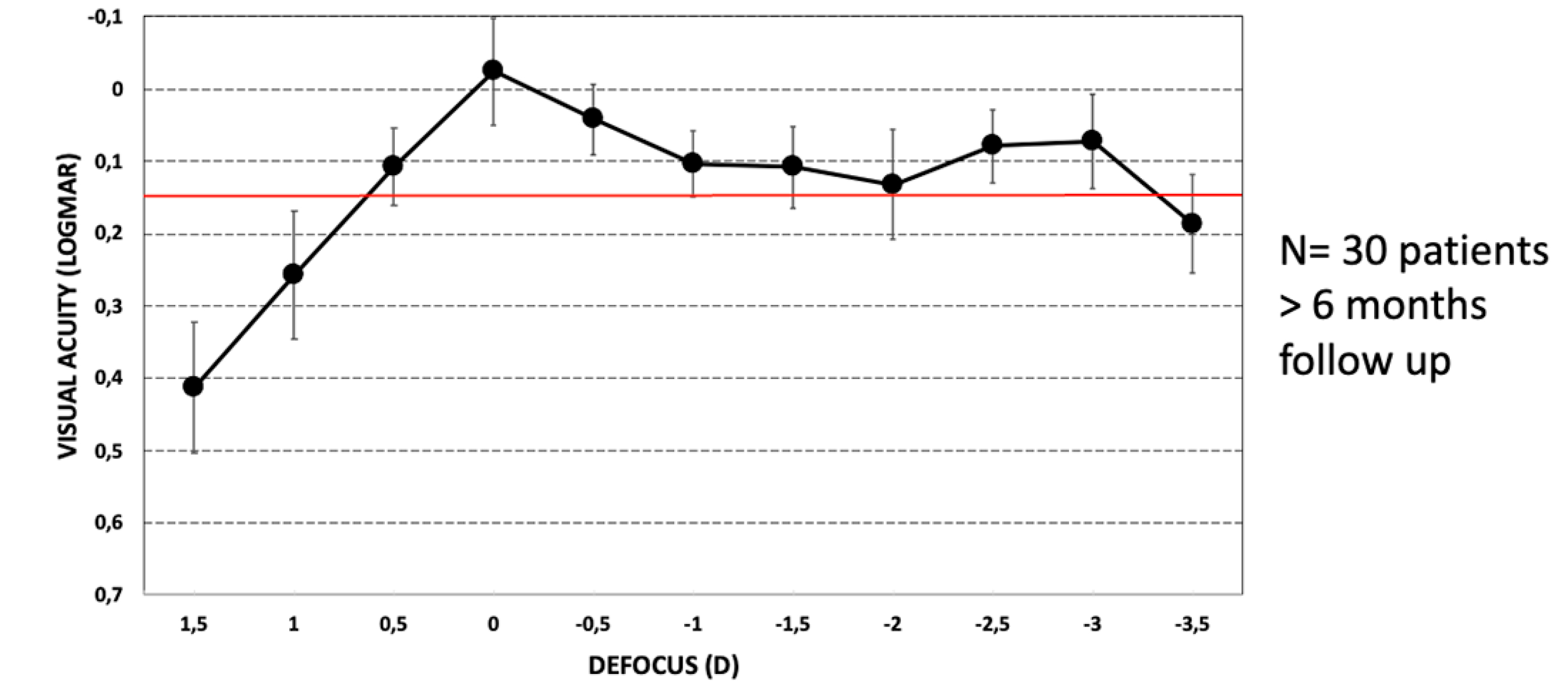
Figure 2. Binocular defocus curve of paring Vivinex Gemetric (G) and Vivinex Gemetric Plus (GP) IOLs shows broad range of vision (30 Patients; more than 6 months postoperative).
Additionally, contrast sensitivity in both photopic and mesopic conditions was high (Figure 3). At 6 months, eyes demonstrated low levels of aberrations (HOA 0.09 ±0.05 µm, LOA 0.30 µm ±0.14 µm, and SA 0.01 ±0.02 µm, respectively), as measured with the Pentacam AXL Wave (Oculus Optikgeräte).
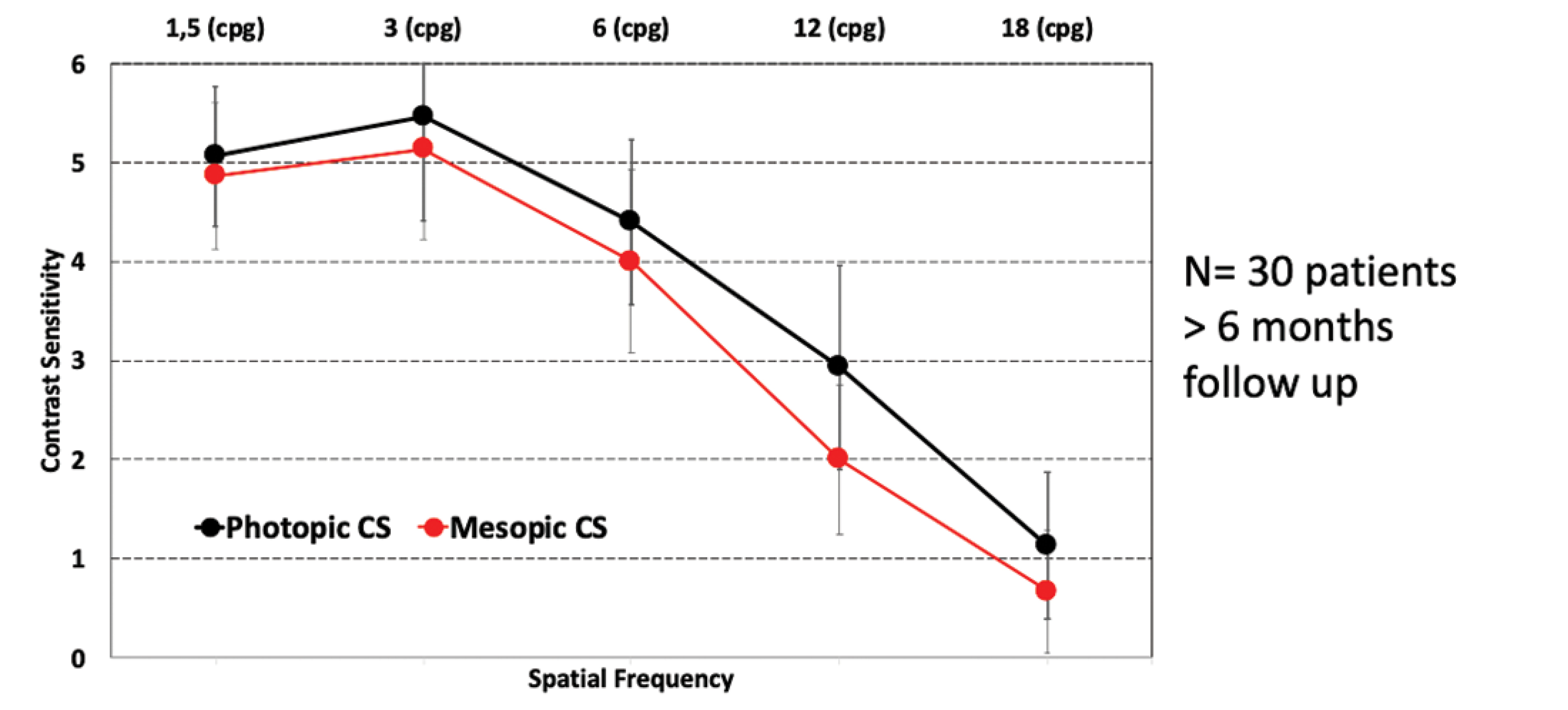
Figure 3. High levels of contrast sensitivity achieved by patients with pairing Vivinex Gemetric (G) and Vivinex Gemetric Plus (GP) IOLs (30 Patients; more than 6 months postoperative).
With so much confidence in the results with contralateral implantation of G-GP, I have expanded the use of this combination in very carefully selected patients after myopic LASIK ablation with very positive outcomes.
CONCLUSION
Eyes implanted with Vivinex Gemetric and Vivinex Gemetric Plus have high levels of contrast sensitivity and low levels of aberrations. I can provide my patients with a broad range of continuous, high-quality vision outcomes by pairing Vivinex Gemetric and Vivinex Gemetric Plus.
Redefining Full Range of Focus With Pairing Vivinex Gemetric and Vivinex Gemetric Plus IOLs
Dylan A. Joseph, MBChB, Dip(Ophth), FC Ophth, MMed, FWCRS
Like the other authors at HOYA’s User Meeting during the 2023 ESCRS, I am convinced of the benefits provided by pairing the Vivinex Gemetric (G) and Vivinex Gemetric Plus (GP) IOLs.
I started using these IOLs in January 2022, and what really grabbed my attention was the concept of pairing different light distributions to achieve a full range of focus. My experience in the past has been that working distance is a tricky target to get right, with most full-range-of-focus IOLs having a shortfall of vision in the 50 to 70 cm range. Pairing G-GP, however, provides a continuum of light distribution from 30 to 70 cm. After a series of 40 patients who received this approach, my impression is that patients can consistently achieve a full range of vision.
DATA REVIEW
In my clinic, 29 patients (58 eyes) with a mean age of 65.1 ± 6.76 years received the paired approach G-GP, and eight patients (16 eyes) received bilateral G-G.
A toric IOL was selected if the net corneal cylinder was greater than 0.60 D. Almost 50% of patients received a toric lens. Most lenses (81%) were implanted during cataract surgery, while 19% were implanted as refractive lens extraction.
At 4 to 6 weeks postoperative, 96.6% and 93.8% of eyes in the paired G-GP and the bilateral G-G groups, respectively, were within ±0.50 D of residual refractive spherical equivalent. The difference was not statistically significant.
The main study endpoint was postoperative binocular visual acuity. There were no differences in binocular uncorrected distance and intermediate visual acuities between both study groups, but it is the uncorrected near vision where the pairing approach stands out. In the G-GP group, 51.7% of patients had a near visual acuity equal or better than 0.0 logMAR, while no patient had such result in the bilateral G-G group. Overall, in both groups, 100% of patients were equal or better than 0.2 logMAR for near distance (Figures 1 and 2).

Figure 1. Binocular uncorrected near visual acuity with pairing Vivinex Gemetric (G) and Vivinex Gemetric Plus (GP) IOLs (29 patients).

Figure 2. Binocular uncorrected near visual acuity with bilateral Vivinex Gemetric (G) IOLs (8 patients).
CONCLUSION
My personal data is very similar to the data presented from the multicenter clinical trial. Bilateral G-G implantation and pairing G-GP both provide patients with excellent distance vision. However, pairing the two lenses provides the benefits of both Vivinex Gemetric lens models to achieve a full range of vision.
Often, one needs to be careful implanting multifocal IOLs in eyes with myopia. However, in my experience, these patients are often delighted with this pairing approach because they both maintain excellent near vision and improve their distance vision following surgery. Also, the dysphotopsia profile of the Vivinex Gemetric and Vivinex Gemetric Plus is comparable to other full-range-of-focus IOLs.
I am delighted to say that my mother received the Vivinex Gemetric & Vivinex Gemetric Plus pairing in March 2023 and is 100% satisfied with the result.
_____________________________________________________________________________________________________________________________________________
2024-03-28_HSOE_XY1-G_XY1-GT_XY1_GP_XY1-GPT_SUPP_EN
Information contained is intended for health care professionals. Please refer to the Instructions For Use for the intended purpose and a full list of indications and contraindications. Some of the products and/or specific features as well as the procedures featured in this document may not be approved in your country and thus may not be available there. Design and specifications are subject to change without prior notice as a result of ongoing technical development. Please contact our regional representative regarding individual availability in your country. HOYA, Vivinex, Gemetric and multiSert are trademarks of the HOYA Corporation or its affiliates. ©2024 HOYA Medical Singapore Pte. Ltd. All rights reserved. HOYA Medical Singapore Pte. Ltd. 10 Biopolis Road #04-01/06, Chromos, Singapore 138670, SINGAPORE HOYA Surgical Optics GmbH | De-Saint-Exupery-Str. 10 | 60549 Frankfurt am Main | Germany | Hotline DE: Tel. +49 (0)800 664 2 664 | Fax +49 (0)800 774 2 774 hoyasurgicaloptics.com
This article is published on the CRST Global Europe Edition website. Here is the link to the article: https://crstodayeurope.com/articles/vivinex/clinical-data-and-real-world-experience-with-vivinex-gemetric-trifocal-iols/

Erik L. Mertens, MD, FEBO, FWCRS, PCEO
- Medical Director, Founder, and Physician CEO, Medipolis-Antwerp Private Clinic, Antwerp, Belgium
- e.mertens@medipolis.be
- Financial disclosure: Consultant to HOYA Surgical Optics

Bob Anello
- Senior Vice President, Global Clinical & Medical Affairs, HOYA Surgical Optics

Hakan Kaymak, MD
- Head Surgeon, Retina, Macula, and Vitreous Body, Breyer, Kaymak, & Klabe Augenchirurgie, Dusseldorf, Germany
- Internationale Innovative Ophthalmochirurgie (I.I.O.) GbR, Dusseldorf, Germany
- Professor Institute of Experimental Ophthalmology, Saarland University, Homburg, Germany
- dr.h.kaymak@gmail.com
- Financial disclosure: Consultant (HOYA Surgical Optics, HOYA Lens Deutschland), Honoraria and Lecture Fees (HOYA Vision, HOYA Surgical Optics)

Ramón Ruiz Mesa, MD, FWCRS
- Medical Director, Oftalvist Andalucía Clinics, Spain
- rruiz@oftalvist.es
- Financial disclosure: Speaker (HOYA Surgical Optics)

Dylan A. Joseph, MBChB, Dip(Ophth), FC Ophth, MMed, FWCRS
- Cataract and refractive surgeon, Vision for Life Clinic, Knysna, South Africa
- idr@drdylanjoseph.com
- Financial disclosure: Consultant (HOYA Surgical Optics)

